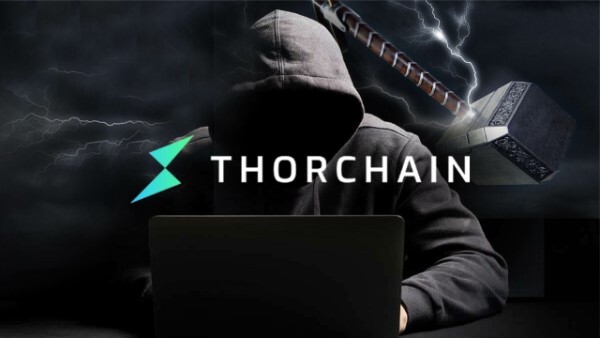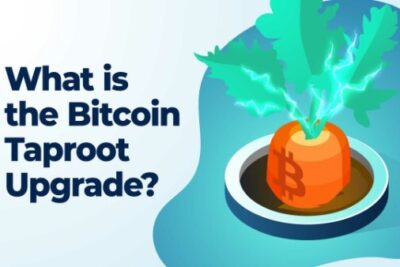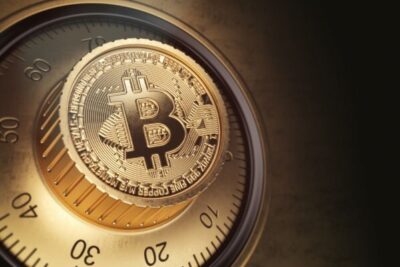

What Is THORChain (RUNE)? The Bridge For Bitcoin, Ethereum
25 July 2022
Via this article, bePAY will show you all information about THORChain Project, and what is RUNE token? And further information about THORChain Project. Now let’s dive into it!
THORChain is a secondary blockchain built using the Cosmos SDK that will provide decentralized chain-to-chain commerce (DEX). It uses an automated market maker (AMM) technique like Bancor (BNT) or Uniswap, using RUNE as the basic swap pair. This method enables traders to move between separate asset pools using RUNE as a semi-transparent intermediary. LPs, who deposit or “stake” assets on both sides of a liquidity pool, are compensated for trading expenses.
It uses AMM to facilitate crypto assets swaps on a decentralized crypto network to simplify THORChain blockchain asset trading. Bifrost provides a cross-chain bridge to join chains. THORChain uses updated “smart tokens” called Continuous Liquidity Pools to facilitate asset trading (CLPs). CLPs pay users for supplying pool liquidity. RUNE is THORChain’s native token, which owners may utilize to contribute to a liquidity pool.
What Is THORChain (RUNE)?
The project was initiated in 2018, and THORChain is migrating from its “multichain chaosnet” beta version, which became online in April 2021. In the past, it was the target of million-dollar cyberattacks.
The team says that during the last four years it has transformed from a completely centralized project to a community-driven one whose “network is governed exclusively by 100 decentralized nodes”.
While the launch of the mainnet does not necessarily bring about any fundamental changes to how the protocol runs, other than fewer bugs and improved network stability/security, it will bring about significant changes to how the project is managed and embraced, and it will signify the maturation of THORChain into a fully-fledged network.

THORChain RUNE explanation
Prior to building its own blockchain, THORChain originally began with two copies of its token on Binance Chain and Ethereum, and the company has previously highlighted reservations about the minting features and trading markets of these two assets.
As part of the mainnet launch, THORChain intends to eliminate these two RUNE types over the course of the next six months in an effort to phase in the new completely native and unified token form. According to the creators, this will also help more wallets support the asset.
What Is RUNE Token?
The native currency of THORChain is RUNE. THORChain RUNE as a foundation pair, enabling users to exchange RUNE for other supported assets throughout the network. It has a supply of 500 million units and four primary use cases, including settlement, security, governance, and incentives.
Settlement Asset
THORChain RUNE is the settlement asset for all liquidity pools, making swaps across pools possible. Each pool needs to have a 1:1 RUNE: ASSET ratio. For instance, a pool holding $100,000 in BTC must keep $100,000 in RUNE.
Protection
Node operators must bond twice as much RUNE as they contributed to a pool to assure security. The RUNE bonds serve as collateral to guarantee that node operators act in the network’s best interest.
Governance
The holders of RUNE tokens may pick which asset or chain to prioritize. They do it by using their liquid assets as a vote. For instance, a pool with the greatest number of RUNE commitments would get greater priority.

RUNE token explanation
Incentives
In RUNE, block rewards and swap fees are distributed on a predetermined timetable to liquidity providers and node operators. Additionally, RUNE may be used to pay for petrol.
The smallest RUNE unit, termed a Tor, has eight decimal places. RUNE seeks to approach a deterministic value that is predictable. RUNE’s market capitalization is intended to be at least three times the entire value of non-RUNE assets in the ecosystem’s liquidity pools.
How Does THORChain Work?
THORChain enables an ecosystem of cross-chain infrastructure-integrated goods and services. THORChain is used by platforms like THORSwap, the first multichain DEX to leverage its network as a front-end interface, to conduct cross-chain exchanges. THORSwap lets users pick the two assets they want to exchange, and the protocol calculates the costs automatically depending on network activity.
The network’s usage of a continuous liquidity pool (CLP) in which RUNE serves as an intermediary for every exchange enables swaps to occur on THORChain.

How does THORChain work?
When two assets are exchanged on THORChain, they are truly exchanged between two distinct pools. Because each liquidity pool on THORChain couples RUNE with accessible assets, this is the case. If a THORChain user wants to swap USDT for ETH, for instance, they would first trade USDT for RUNE on one pool before exchanging RUNE for ETH on another pool.
The THORChain state machine exchanges one asset for RUNE, transfer it to a second pool, and then exchanges RUNE for the asset requested by the user. This is done without the user ever having to convert their cryptocurrency into RUNE or taking possession of RUNE. With the CLP liquidity model of THORChain, the protocol can adjust to varying liquidity needs.

THORChain working mechanism
Additionally, members of THORChain have four primary roles:
Liquidity providers (LPs): In exchange for block rewards and swap transaction fees, LPs provide assets to liquidity pools. The rewards depend on the activity of the pool and the proportion of the LP’s tokens represented in the pool.
Swappers: Swappers are THORChain users who swap between different crypto assets.
Traders: THORChain depends on arbitrage traders who search for assets that are cheap or overpriced on THORChain relative to their market pricing on other exchange platforms. Arbitrageurs rebalance liquidity pools by purchasing or selling assets on numerous exchanges until the values of those assets in the pool match the current market price.
Node operators: Node operators stake a certain amount of RUNE to sustain the network and participate in the proof-of-stake consensus process of THORChain. In a process known as “churning”, these network operators are cycled in and out of the network depending on their dependability.
>> Recommend further information about arbitrage trading
What Is THORChain Used For?
Users of THORChain may simply exchange one asset for another in a permissionless setting, removing the need for order books. A ratio of assets in a pool instead of maintaining market pricing. The native cryptocurrency of THORChain, RUNE, supports these cross-chain transactions.
To do this, the platform matches the tokens being exchanged with RUNE of similar value. When a THORChain user exchanges ETH for BTC, for instance, the platform enables the exchange from ETH to RUNE and subsequently from RUNE to BTC.

How and what is THORChain used for?
THORChain’s use of RUNE enables it to retain an autonomous blockchain capable of interconnecting with many other networks to facilitate cross-chain transactions. Consequently, traders may utilize the platform to exchange numerous cryptocurrencies without the need for a centralized exchange. Eliminating the need for exchanges increases efficiency and reduces trading expenses.
By staking and locking their RUNE tokens in THORChain’s liquidity pools, RUNE holders support the network’s operations.
What Makes THORChain Special?
THORChain is a DEX where asset exchanges do not need packaging. Additional advantages of THORChain are included below:
Swappers And Traders
- Allow layer-1 native assets to be exchanged across various blockchains.
- No registration is necessary; anybody may submit a transaction, and THORChain will perform the swap.
- Do not need to encapsulate their assets; THORChain performs swaps using its vaults of native assets.
- Without depending on centralized third parties or oracles, users have access to clear, fair rates.
- Enjoy on-demand liquidity at all times.

Specific traits of THORChain project
>> More ideas on what is layer 1 crypto
Liquidity Providers
- Profit from idle assets such as native BTC, ETH, BNB, and LUNA.
- After 100 days in the pool, you are eligible for permanent loss (PL) coverage of up to one hundred percent.
- There are no lock-in periods.
- Not need to register.
- Not required to interact with other parties.
Node Operator
- When node operators protect the network, they are rewarded.
- Encouraged to maintain anonymity to promote decentralization.
- Not need to register.
Who’s Behind THORChain Project?
THORChain was created by a mostly unknown group. The multi-chain “chaosnet” of the protocol, which was conceived in 2018 at a Hackathon, was eventually introduced in April 2021 following early development on a few testnets.
The larger objective of its team and community is to develop decentralized liquidity in order to remove the need for centralized parties, who have denied people access to financial goods or services for different reasons.

The team behind THORChain
DeFi is all about decentralizing access to money, as its name indicates. DeFi is an abbreviation for a group of financial products that enable users to borrow, lend, purchase, and sell crypto assets without the need for middlemen. As a DEX (also known as a Decentralised Exchange), THORChain is part of this category of goods, and it aspires to push the frontiers of decentralized finance even further.
By the summer of 2022, THORChain’s team intends to totally transfer ownership of the network to the community.
FAQs About THORChain
How Is The THORChain RUNE Token Price Determined?
THORChain has a variable exchange rate, which means its price is determined by individual sellers depending on the supply and demand of the cryptocurrency. As THORChain is a globally traded asset, its price varies dependent on the order books, volume, currency rates, and service costs of each THORChain exchange.
Check real-time THORChain RUNE token price here.
Is THORChain Secure?
THORChain’s source code is completely open source and has been audited seven times by respectable auditing firms such as CertiK and the Gauntlet.

Some frequently asked questions about THORChain
Is THORChain An Attractive Investment?
The website predicts that the rune token price will be valued at around $7.11 in one year. The site forecasts that the RUNE token price will surpass $7.63 in 2025. In addition, if the number of widespread adoptions is considered, the price of THORChain is projected to reach a maximum of around $9.88 by 2025.
Closing Thoughts
The THORChain team thinks their cross-chain exchange mechanism is only the beginning. They intend to develop a system for the whole of DeFi that will provide borrowing, lending, and even synthetic services across many blockchains.
In the near future, the team intends to improve wallet support, update the main website, introduce pools for additional assets, such as Dogecoin, Zcash, and Monero, and eliminate protective measures now in place on the network, thus transforming chaosnet into the mainnet.

What Is Taproot Bitcoin? How Does It Affect Bitcoin?
24 June 2022
What Is Tendermint? What Makes Tendermint Great?
30 July 2022
What Is Harmony ONE Blockchain And How Does It Work?
16 June 2022






